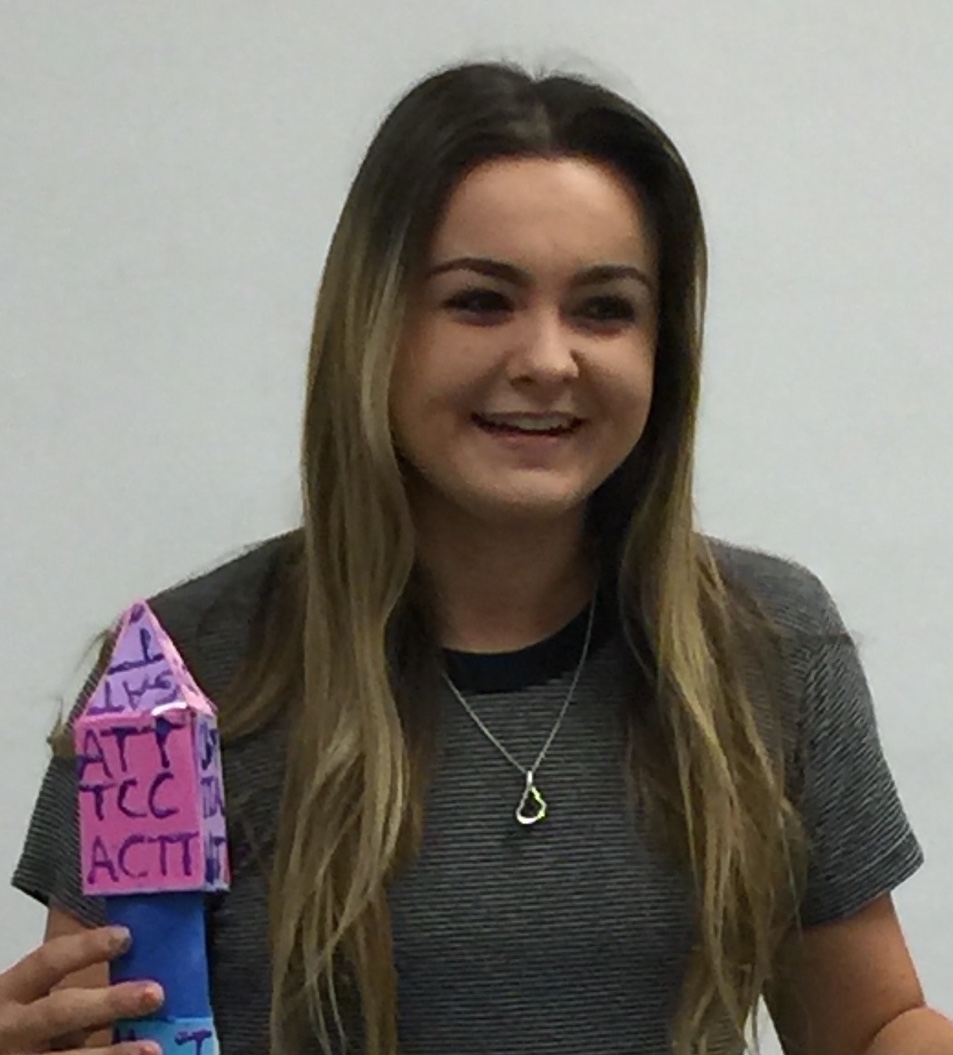Below is a summary of the abstract you submitted. Presenting author(s) is shown in bold.
If any changes need to be made, you can modify the abstract or change the authors.
You can also download a .docx version of this abstract.
If there are any problems, please email Dan at dar78@pitt.edu and he'll take care of them!
This abstract was last modified on May 5, 2017 at 3:43 p.m..

JMU Viral Discovery students isolated 50 phages using Bacillus thuringiensis Kurstaki (BtK) as the host, and 12 genomes were sequenced. Five of these were shown by TEM to be podoviruses and 7 were myoviruses. Four of the podoviruses, KonjoTrouble, Juan, RadRaab, and VioletteMad, were analyzed in detail. These podoviruses have prolate heads measuring 8 x 15 nm with short tails of 10nm or less. Around the neck, we observed unique appendage like structures. The small genomes ranged from 23929-26054 basepairs, and the GC content matched that of the host around at ~30%. The number of predicted genes ranged from 34-45. Of those, we were able to assign a putative function for about 14 genes. These four viruses have a highly conserved region encoding structural proteins at one end of the genome and a less well conserved region encoding enzymes or hypothetical proteins at the other end, as viewed using Phamerator. Several genes for typical structural components could be identified, including major head and tail proteins, and the gene encoding the conserved neck appendage protein was also identified. There is an unusual non-coding region that we have noted in similar podoviruses isolated at JMU and other SEA-PHAGES schools. These non-coding regions of about 800 bases are located in the left end of the genomes amongst hypothetical genes. Our BtK podoviruses are similar to the well-studied Bacillus subtilis phage, Phi29. All members of this family have discrete genome ends to which terminal proteins are covalently bound in the phage head and serve to prime DNA replication. The terminal protein gene was located next to the gene for DNA polymerase near the left end of our genomes. The ends of the genome in this family also have small inverted repeats. We noted identical repeats in the four phage genomes, which are 21 bases long with one mismatch. Among the structural genes was a lytic transglycosylase protein, which was similar to the tail lysin protein crystallized from Phi29. The lytic activity is contained in a protein at the tip of the tail, and the function is to locally break down the peptidoglycan structure to allow DNA to be inserted into the bacteria without breaking down the entire wall. These four phage genomes have been submitted to GenBank.

